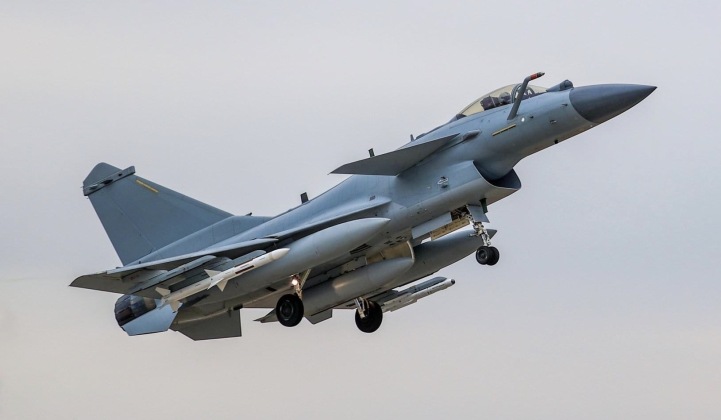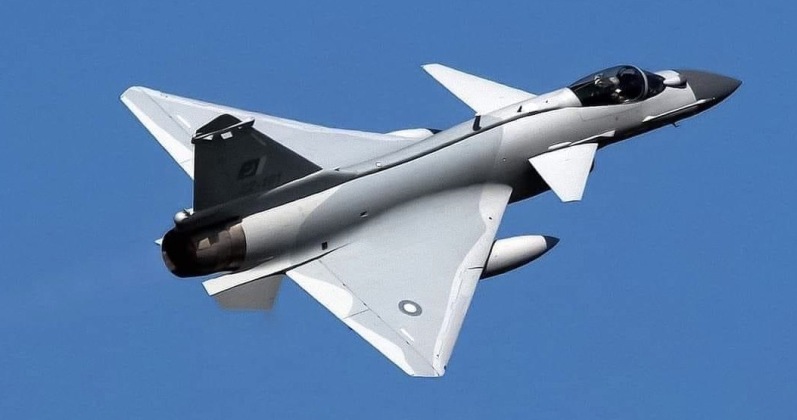News
Turkey to Drop Plans For F-16s: Chinese J-10C Fighters Hinted as Choice to Modernise Fleet

A member of the Turkish Presidency’s Security and Foreign Policies Council, Cagri Erhan, has announced that the country is expected to drop its requests to acquire F-16C/D fourth generation fighter aircraft from the United States. He cited the fighter’s “$20 billion cost package,” and the availability of more cost effective options in particular the Chinese J-10C. “Now we have other options like the Chinese jet, which was sold to Pakistan, Russian jets and also Eurofighter jet.” Pakistan began receiving J-10C fighters from China in February 2022 – a fighter from the same weight range as the F-16 but with a design several decades newer and multiple important performance advantages particularly in regards to its armaments and flight performance. Like the F-16 Block 70/72, the J-10C is a single engine lightweight fighter with a low operational cost and enhanced fifth generation level avionics. The Chinese aircraft has the benefit of comparable and in most respects superior capabilities, as well as lower maintenance needs and a much faster delivery time. Turkey, however, is the largest foreign operator of the F-16 with approximately 250 in service, meaning new F-16s would be much easier to integrate with existing logistics and training regimes and would be compatible with existing air launched weapons it already fields.
China has in the past modified its fighters to be able to operate American weapons at the request of foreign clients – most notably third generation J-7 fighters sold to Pakistan which can used American AIM-9 Sidewinder missiles. Turkey is itself looking to phase out American air to air weapons from its F-16 fleet by developing indigenous alternatives, the Peregrin and Merlin, which could provide a means of standardising the weaponry on both J-10 and F-16 units. Neither of these missiles, however, nor those available for even the latest F-16s, match the performances of the PL-10 and PL-15 air to air missiles used by the Chinese aircraft. The J-10C’s arsenal of cruise missiles also optimise it for anti shipping, air defence suppression and strike roles with many of these weapons having no analogues in the F-16’s armaments suite. A further key benefit of the J-10C is that it can be acquired at a small fraction of the cost of the F-16, in part because it is being produced on a much larger scale. While China has acquired over 200 J-10Cs for its own fleet since 2018, the United States has not purchased F-16s for 18 years since 2005 meaning the aircraft is being manufactured as a lower end product for export. The discrepancy in the statuses of the two programs is reflected in the fact that the J-10 design has received considerably more far reaching upgrades and investments to improve its performance over the past two decades than the F-16 has.

Turkey previously sought to acquire the F-16’s fifth generation successor the F-35, but was evicted from the program by Washington due to its decision to acquire Russian S-400 air defence systems over its Western competitors. While Turkey could eventually seek to acquire an alternative fifth generation fighter from abroad, the J-10C provides a useful stopgap fighter until then which could furnish multiple units within a year due to its rapid production rate. The queue for F-16s by contrast would leave Turkey waiting until the mid 2030s to receive the numbers aircraft it needs, with the small production line already having a backlog of orders from Slovakia, Bulgaria, Jordan, Bahrain, and most notably Taiwan which placed a massive $8.1 billion in 2019. Possible F-16 sales to Turkey have also been met with strong opposition in the U.S. Senate which has been a key factor delaying a possible deal.

Turkey’s strong preference for lightweight single engine fighters makes the J-10C a leading option, as does the fact that any Western backlash would be far more muted if it selected a Chinese fighter than if it acquired a Russian one – despite prior negotiations to acquire Russian Su-35 heavyweight fighters. China’s advanced electronics industry means that the J-10C is broadly on par in terms of avionics with top end American fighters – which is not the case for Russian aircraft such as the Su-35. Indeed, in simulated combat in China the J-10C has reportedly gained overwhelming victories over the Su-35 despite being around half the size, with U.S. Senate reports indicating that the J-10’s sophistication could allow it to threaten much heavier fighter classes such as American and Japanese F-15s. Close defence cooperation between Turkey and Pakistan, and feedback from the Pakistan Air Force on J-10C operations, are likely to have been a factor should Turkey indeed be considered acquiring the Chinese jets.












